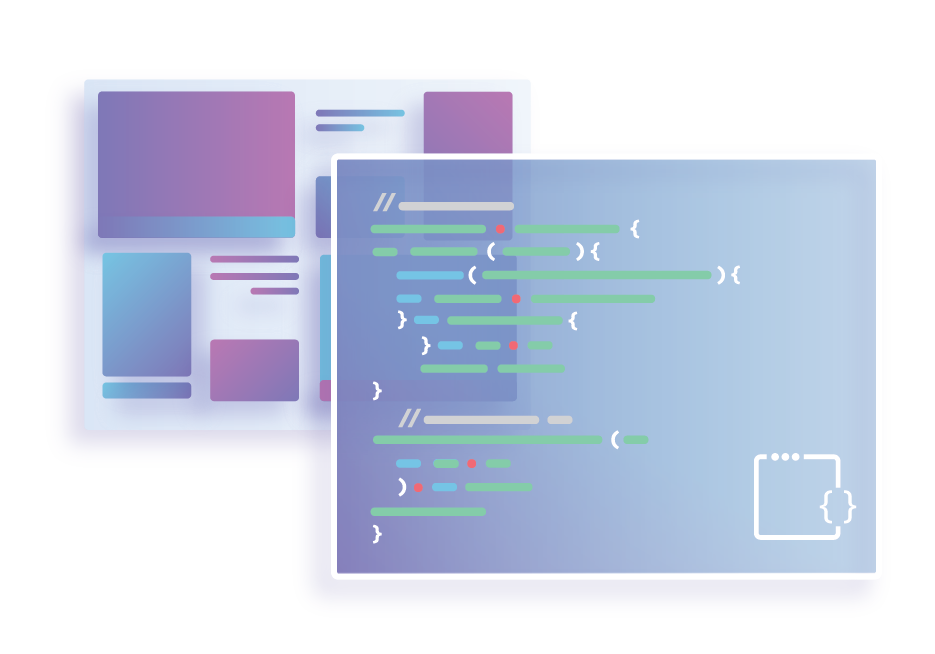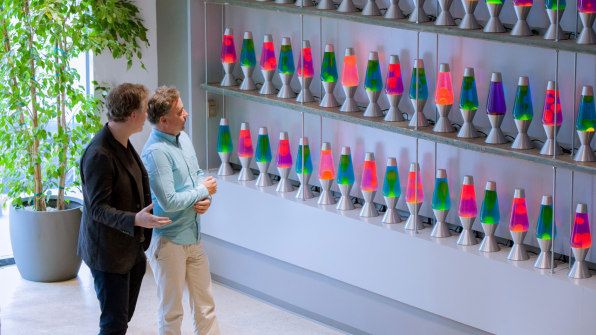The Week in Internet News: Social Media Networks Sign onto Fake News Code

Fake news code: Google and several operators of social networks have signed a code of conduct to combat fake news, CNet reports. The code of conduct, pushed by the European Union, stipulates that they must work to disrupt advertising revenues of accounts and websites that spread disinformation. The code also requires that the websites empower people to report disinformation and access other news sources.
Government news vs. fake news: Indonesia’s communications ministry plans to hold weekly briefings to highlight examples of “hoax” news reports, Time.com reports. The briefs will also focus on digital literacy as the country moves toward a presidential election next year. The government also plans to have a 70-member content management team to determine fake news.
Fake news as cancer: Lots of news about fake news this week. The billionaire owner of the Los Angeles Times as called fake news the “cancer of our time,” CNBC.com says. Meanwhile, cancer still exists. Patrick Soon-Shiong blamed social media for the spread of fake news.
Too little regulation? California’s recently passed Internet of Things security bill may be “too little, too late,” says an opinion piece on Diginomica.com. “No one seems to believe that SB-327 will completely Continue reading
SDxCentral Drills Into the Silicon Foundation of Network Virtualization
 Network virtualization has primarily focused on software. But now there’s interest in the lower layers of the network: commodity hardware and the silicon that drives the hardware.
Network virtualization has primarily focused on software. But now there’s interest in the lower layers of the network: commodity hardware and the silicon that drives the hardware.
HPE Revamps Its StoreOnce Data Protection and Backup
 The updates essentially allow enterprises to store data once, then copy it to an all-flash on-premises array, and send it to a public cloud for for archiving or disaster recovery.
The updates essentially allow enterprises to store data once, then copy it to an all-flash on-premises array, and send it to a public cloud for for archiving or disaster recovery.
4 Traits of a Cyber-Resilient Culture
Companies with a solid track record of cybersecurity share these practices and characteristics.
EIGRP Support in FRRouting 5.0.1

Recently, I have created Linux Core 9.0 x86-64 VMware Disk (VMDK) and installed FRRrouting suite 5.0.1 on the top of it in order to test current EIGRP support in Linux (RFC 7868).
The last time I tested EIGRP with FRR 3.1-dev installed on Linux Core, FRR suffered from many bugs. In fact, they were so serious so EIGRP was not ready for use. Unfortunately, they are also presented in FRR version 5.0.1. Therefore, I advise you to use another IGP routing daemons such as OSPF or IS-IS available in FRR until the issues are resolved.
Anyway, you can use my Core Linux VMDK disk with installed FRRouting 5.0.1 to practice routing in Linux. Thanks to using minimalistic Core Linux distribution, the size of image is only about 86 MB. The Core kernel is compiled with enabled option MULTIPATH so you can test equal cost multipath routing with OSPF. The image is available in Linux Core Router/Switch appliances.
Don’t Make a Total Mess When Dealing with Exceptions
A while ago I had the dubious “privilege” of observing how my “beloved” airline Adria Airways deals with exceptions. A third-party incoming flight was 2.5 hours late and in their infinite wisdom (most probably to avoid financial impact) they decided to delay a half-dozen outgoing flights for 20-30 minutes while waiting for the transfer passengers.
Not surprisingly, when that weird thingy landed and they started boarding the outgoing flights (now all at the same time), the result was a total mess with busses blocking each other (this same airline loves to avoid jet bridges).
Read more ...Rosetta: large scale system for text detection and recognition in images
Rosetta: large scale system for text detection and recognition in images Borisyuk et al., KDD’18
Rosetta is Facebook’s production system for extracting text (OCR) from uploaded images.
In the last several years, the volume of photos being uploaded to social media platforms has grown exponentially to the order of hundreds of millions every day, presenting technological challenges for processing increasing volumes of visual information… our problem can be stated as follows: to build a robust and accurate system for optical character recognition capable of processing hundreds of millions of images per day in realtime.

Images uploaded by clients are added to a distributed processing queue from which Rosetta inference machines pull jobs. Online image processing consists of the following steps:
- The image is downloaded to a local machine in the Rosette cluster and pre-processing steps such as resizing (to 800px in the larger dimension) and normalization are performed.
- A text detection model is executed to obtain bounding box coordinates and scores for all the words in the image.
- The word location information is passed to a text recognition model that extracts characters given each cropped word region from the image.
- The extracted text along with the location of the Continue reading
DOH!
If you had the opportunity to re-imagine the DNS, what might it look like? Normally this would be an idle topic of speculation over a beer or two, but maybe there’s a little more to the question these days. We are walking into an entirely new world of the DNS when we start to think about exactly might be possible when we look at DNS over HTTPS, or DOH.Real World Serverless: The Video
We held our second Real World Serverless event in London last week and filmed the four talks about Serverless technology to share with you here, on the Cloudflare blog. Check out the recording, featuring Henry Heinemann, Sevki Hasirci, and Stephen Pinkerton from Cloudflare and Paddy Sherry from gambling.com Group.
For details of our other upcoming Real World Serverless events in Austin, Singapore, Sydney, and Melbourne, scroll to the bottom.
Video transcript:
Moderator: Okay, welcome to Cloudflare, everybody. I'm so pleased that you're here. This is the second event of our real world serverless event series. We had our first one in San Francisco just last week, and we were so excited to fly over here, both me and Jade and some other Cloudflare employees, and tap into this community here, because this is our second largest office.
We also frankly, love coming here to London to visit and engage with the developer community here. Let me hand this over to Jade and she'll speak a little bit about Cloudflare, and then we'll get started with speaker number one.
[applause]
Jade: Hello, everyone. Welcome to Cloudflare. It's on, okay cool. How many of you know Continue reading
Ansible – Don’t be Afraid of a Little Python
This year I’ve written several Ansible modules. It wasn’t that hard, yet some people claimed they had been waiting “years” for those modules. There was nothing stopping anyone else doing it, yet they hadn’t. There’s a weird reticence amongst network engineers to learn or write any code, even when it could make a large difference to their job. People either do nothing, or they create complex Ansible playbooks to work around their reluctance to write Python. It’s not that scary. Why don’t people put in a bit of effort?
Don’t be Afraid of a Little Python
Ansible playbooks use YAML, a somewhat human-readable markup language. These are instructions for “what” Ansible should do - e.g. “Use the Cisco ios_config module to ensure that this configuration line
The underlying modules use Python. These are the “how” - they take the instructions from the playbooks, and turn those into device connections to devices, making configuration changes, checking state, etc.
Some people look at these modules as a mystery black box that only the vendor can write. They think that the only way they can interact with Ansible is via playbooks.
This leads to two situations:
1/ Twiddling thumbs Continue reading
Ansible – Don’t be Afraid of a Little Python
This year I’ve written several Ansible modules. It wasn’t that hard, yet some people claimed they had been waiting “years” for those modules. There was nothing stopping anyone else doing it, yet they hadn’t. There’s a weird reticence amongst network engineers to learn or write any code, even when it could make a large difference to their job. People either do nothing, or they create complex Ansible playbooks to work around their reluctance to write Python. It’s not that scary. Why don’t people put in a bit of effort?
Don’t be Afraid of a Little Python
Ansible playbooks use YAML, a somewhat human-readable markup language. These are instructions for “what” Ansible should do - e.g. “Use the Cisco ios_config module to ensure that this configuration line
The underlying modules use Python. These are the “how” - they take the instructions from the playbooks, and turn those into device connections to devices, making configuration changes, checking state, etc.
Some people look at these modules as a mystery black box that only the vendor can write. They think that the only way they can interact with Ansible is via playbooks.
This leads to two situations:
1/ Twiddling thumbs Continue reading
Ansible – Don’t be Afraid of a Little Python
This year I’ve written several Ansible modules. It wasn’t that hard, yet some people claimed they had been waiting “years” for those modules. There was nothing stopping anyone else doing it, yet they hadn’t. There’s a weird reticence amongst network engineers to learn or write any code, even when it could make a large difference to their job. People either do nothing, or they create complex Ansible playbooks to work around their reluctance to write Python. It’s not that scary. Why don’t people put in a bit of effort?
Don’t be Afraid of a Little Python
Ansible playbooks use YAML, a somewhat human-readable markup language. These are instructions for “what” Ansible should do - e.g. “Use the Cisco ios_config module to ensure that this configuration line
The underlying modules use Python. These are the “how” - they take the instructions from the playbooks, and turn those into device connections to devices, making configuration changes, checking state, etc.
Some people look at these modules as a mystery black box that only the vendor can write. They think that the only way they can interact with Ansible is via playbooks.
This leads to two situations:
1/ Twiddling thumbs Continue reading
EVPN on the host for multi-tenancy
As an SE at Cumulus, I’m involved in designing and implementing data center networks for MSPs and enterprises. While doing so, I have to be aware of how Cumulus can integrate our solution with solutions from multiple other vendors depending on the solution that is needed. While I’m not a software engineer or protocol developer myself, I’m interested in deploying these solutions in real world environments. Cumulus Linux is a standard Linux environment, and as a company, we use and develop on open-source tools and solutions. In this blog, I would like to address a common requirement in data center networks: multi tenancy, and how this can be achieved in the Linux ecosystem, open-source software and various other tools, specifically with EVPN on the host.
Multi tenancy use-cases
There are two major ones that are often deployed:
• Virtual machines
• Container environments
Virtual machines in the Linux ecosystem are mostly KVM deployments and in many cases deployed in combination with Openstack. There are different multi tenant architectures, but the most common one is to build an overlay network with VXLAN between the hypervisors. To reach resources outside the specific tenant environment, dedicated network nodes are being used.

While this architecture is Continue reading
How to save costs on your API Gateway solution using Cloudflare Workers

The following is a guest post by Janusz Jezowicz, CEO of Speedchecker. The Speedchecker team runs a global distributed measurement network and offer speed test solutions using the Cloudflare platform.
Software companies contemplating offering a public API to 3rd party developers have many options to choose from for how to offer their API securely with high reliability and with fast performance. When it comes to cost though, commercial solutions are expensive and open-source solutions require a lot of time managing servers and the synchronization between them. This blog post describes how we successfully moved our API gateway to Cloudflare Workers and slashed our costs by a factor of 10.
Our original solution based on the Kong open-source API gateway
When we built our measurement network API for cost reasons we opted for open-source solution Kong. Kong is a great solution which has a vibrant community of users and plug-in developers who extend and maintain the platform. Kong is a good alternative to commercial solutions from companies such as Apigee or Mulesoft whose solutions are really catering for larger businesses who can afford them. Kong is free and it works. On the other hand, if your business has complex needs Continue reading
Statement concerning events at Glowbeam Technologies
All of Cloudflare's staff were shocked at the events depicted in NCIS Season 16 Episode 1 where incorrect use of random numbers for encryption resulted in the insertion of multiple trojan horses that brought a nuclear reactor within seconds of a meltdown.
Although Cloudflare has long been a competitor of the company responsible, Glowbeam Technologies, and uses similar random number generation technology, we would like to emphasize that there are significant differences between the two companies.

Firstly, Cloudflare's Lava Lamps are not an "encryption engine" and thus they are not susceptible to tampering by the janitor.
Secondly, all Cloudflare staff undergo extensive background checks.
Thirdly, we were shocked that Glowbeam Technologies' wall of Lava Lamps was a single point of failure. In contrast, Cloudflare uses multiple sources of randomness.

Lastly, Glowbeam Technologies' CEO confirmed that the company did not use "AES" or "key block ciphers", but instead relied solely on their Lava Lamp "encryption engine". Cloudflare strongly advocates for never writing or inventing encryption algorithms and works closely with groups like the IETF to use standard, well understood encryption.
As a result of these events Cloudflare has acquired the assets of Glowbeam Technologies, please visit glowbeamtechnologies.com for more information.
John Graham-Cumming
Chief Technology Officer
Cloudflare, Inc.